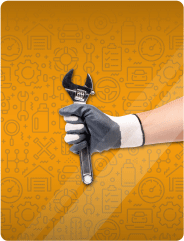Cam & Valve Train 
Fits HYUNDAI i20 ACTIVE (IB, GB) 1.0 T-GDI
(2015)
Important compatibility info
| Type | Control Valve, camshaft adjustment |
| Valve type | Solenoid Valve |
| Connector Shape | oval |
| Weight | 0.137 kg |
| Operating Mode | Electric |
| Number of Poles | 2 -pin connector |
| Placement on Vehicle | Intake Side |
| Net weight | 0.114 kg |
| Function | Control Valve, camshaft adjustment |
Important compatibility info
| Valve type | Solenoid Valve |
| Connector Shape | oval |
| Placement on Vehicle | Intake Side |
| Number of Poles | 2 -pin connector |
| Weight | 0.137 kg |
| Type | Control Valve, camshaft adjustment |
| Operating Mode | Electric |
| Function | Control Valve, camshaft adjustment |
| Net weight | 0.114 kg |
Important compatibility info
| Connector Shape | oval |
| Placement on Vehicle | Intake Manifold |
| Type | Control Valve, camshaft adjustment |
| Function | Control Valve, camshaft adjustment |
| Extra Description | Lucas Premium Blade |
| Net weight | 0.114 kg |
| Valve type | Solenoid Valve |
| Operating Mode | Electric |
| Number of Poles | 2 -pin connector |
| Weight | 0.137 kg |
Important compatibility info
| Extra Description | Cambiare |
| Function | Control Valve, camshaft adjustment |
| Type | Control Valve, camshaft adjustment |
| Placement on Vehicle | Intake Side |
What is a camshaft & valve train?
The camshaft and valve train are parts responsible for the opening and closing of the inlet and outlet functions of the combustion process. Air is provided by the inlet process and spent exhaust fumes are released by the outlet process.
There are several parts that make up the camshaft and valve train.
These are:
Camshaft (Inlet)/li>
Camshaft (Outlet, exhaust)
Tappet / Lifter
Cam follower
Valve (Inlet)
Valve (Outlet)
How do I choose the correct camshaft and valve train parts?
Obtaining the original (OE) part numbers and comparing them against matching parts is the sure way of sourcing the correct replacements. Our website has an OE part number search function that will show you parts that match your OE part number.
If you are not able to obtain and compare OE part numbers here are some factors to consider when selecting replacement parts:
Engine code
If part is listed for the inlet or outlet side
Note the quantity required
Vehicle manufacture date (this is not the date the vehicle was registered but the date it was made
Engine number sequence (up to or after as specific number/letter
VIN (chassis number) sequence (up to or after as specific number/letter
What brand of camshaft and valve train parts should I choose?
As these parts do not require replacement or service as often as other engine parts there are not very many aftermarket makers of them. As these parts are precision engineered, quality is high and matches or exceeds the original manufacturers specifications. You can feel confident in ordering any brand knowing the parts will be of the highest quality.
How can I tell my camshaft or valve train parts need replacing?
Issues with the camshaft, valves or tappets/lifter should be addressed as soon as possible to prevent damage to the surrounding parts. We would always recommend that you have your vehicle inspected by a qualified mechanic to receive an accurate diagnosis that these parts need attention.
Some of the symptoms of failing camshaft and valve train parts are:
Check engine light is illuminated
Engine is sputtering, misfiring or backfiring
Engine does not idle smoothly
Loss of engine power
Loud ticking sound from the upper part of the engine
There are metal particles in the oil
Smokey exhaust fumes due to misfiring
Excessive oil use
Decreased fuel economy
 Proud to be a UK-based company
Proud to be a UK-based company Contact us
Contact us







